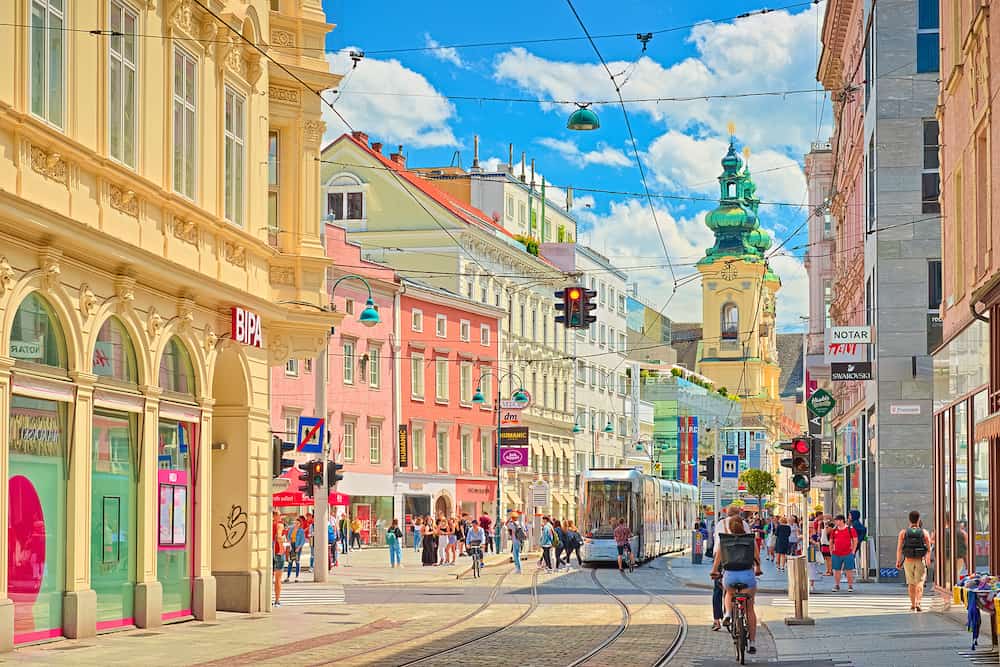Linz, Austria: Where History Meets Innovation on the Banks of the Danube

Introduction:
Nestled along the scenic banks of the Danube River, Linz, Austria, unfolds as a city that seamlessly blends its historical past with a forward-thinking approach to innovation. As the capital of Upper Austria, Linz stands as a cultural hub, an industrial powerhouse, and a haven for creativity. In this extensive exploration, we embark on a journey through the multifaceted layers of Linz, unraveling its historical treasures, embracing its modernity, and delving into the vibrant cultural scene that defines this Austrian gem.
I. Historical Heritage:
A. Linzer Schloss: Linz’s historical heritage is epitomized by Linzer Schloss, a castle overlooking the city. With origins dating back to the medieval period, the castle has witnessed centuries of history, serving as a residence for various noble families and playing a key role in the city’s cultural evolution.
B. Alter Dom: The Alter Dom, or Old Cathedral, stands as a testament to Linz’s religious history. Dating back to the 17th century, the cathedral features a stunning Baroque façade and intricate interior details, reflecting the city’s rich Catholic heritage.
II. Industrial and Technological Hub:
A. Voestalpine: Linz has earned a reputation as an industrial powerhouse, with the Voestalpine steel plant symbolizing the city’s commitment to technological innovation. The plant, one of the largest steel producers in Europe, is an integral part of Linz’s industrial landscape and economic development.
B. Ars Electronica Center: Contrasting with its industrial prowess, Linz embraces innovation through the Ars Electronica Center. This futuristic museum of technology and art explores the intersection of science, technology, and creativity, showcasing Linz’s dedication to cutting-edge developments in the digital realm.
III. Cultural Institutions:
A. Lentos Art Museum: Linz’s cultural scene is enriched by the Lentos Art Museum, an architectural masterpiece along the Danube. This contemporary art museum houses a diverse collection, spanning from classical modernism to contemporary works, inviting visitors to explore the evolution of artistic expression.
B. Brucknerhaus: Named after the renowned composer Anton Bruckner, the Brucknerhaus is Linz’s premier concert hall. Hosting classical music performances, symphonies, and cultural events, it stands as a testament to the city’s appreciation for classical arts.
IV. Danube Promenade:
A. Nibelungenbrücke: The Danube Promenade, with the iconic Nibelungenbrücke (Nibelungen Bridge), offers breathtaking views of the river and the city skyline. This scenic waterfront area provides a picturesque setting for leisurely strolls, outdoor events, and riverside relaxation.
B. Pöstlingbergbahn: For a panoramic view of Linz, visitors can take the Pöstlingbergbahn, a historic cogwheel railway. Ascending to Pöstlingberg Hill, this charming railway offers a unique perspective of the cityscape and the Danube below.
V. Culinary Delights:
A. Linzer Torte: Linz is famous for its culinary contributions, most notably the Linzer Torte. Considered one of the oldest-known cake recipes in the world, this almond and raspberry tart is a delectable symbol of Linz’s gastronomic heritage.
B. Südbahnhofmarkt: The Südbahnhofmarkt, Linz’s central market, is a culinary haven where locals and visitors can explore fresh produce, regional delicacies, and artisanal products. This bustling market reflects Linz’s commitment to sustainable and locally sourced ingredients.
VI. City of Media Arts:
A. UNESCO City of Media Arts: Linz has been recognized as a UNESCO City of Media Arts, underscoring its commitment to fostering creativity in the digital realm. This designation acknowledges Linz’s role as a hub for media arts, technological innovation, and cultural exchange.
B. Tabakfabrik: The Tabakfabrik, a former tobacco factory, has been transformed into a cultural and creative space. Hosting exhibitions, events, and collaborative initiatives, the Tabakfabrik embodies Linz’s dedication to repurposing industrial heritage for contemporary cultural endeavors.
VII. Green Spaces:
A. Donaupark: Donaupark, situated along the Danube, provides a green oasis within the urban landscape. With walking trails, recreational areas, and scenic spots, the park invites residents and visitors to enjoy nature while soaking in views of the river and city.
B. Botanischer Garten Linz: The Botanischer Garten Linz, or Linz Botanical Garden, showcases diverse plant species and themed gardens. This tranquil retreat offers a space for botanical exploration and relaxation, contributing to Linz’s commitment to preserving natural spaces within the city.
VIII. Linz Smart City:
A. Smart City Initiatives: Linz is at the forefront of smart city initiatives, integrating technology to enhance urban living. From intelligent transportation systems to eco-friendly urban planning, Linz demonstrates a forward-thinking approach to sustainability and efficiency.
B. Green Mobility: Linz promotes green mobility with an emphasis on cycling infrastructure, public transportation, and pedestrian-friendly zones. These initiatives align with the city’s commitment to reducing environmental impact and fostering a more sustainable urban environment.
IX. Conclusion:
Linz, with its historical allure, technological prowess, and commitment to cultural innovation, invites visitors to experience a city that harmoniously integrates its past and present. Whether exploring medieval castles, immersing oneself in contemporary art, or savoring local culinary delights, Linz captivates with its diverse offerings. In this city where the Danube flows alongside industrial landscapes and vibrant cultural institutions, Linz emerges as a testament to Austria’s ability to embrace its heritage while forging ahead into a future defined by creativity, sustainability, and dynamic urban living.




